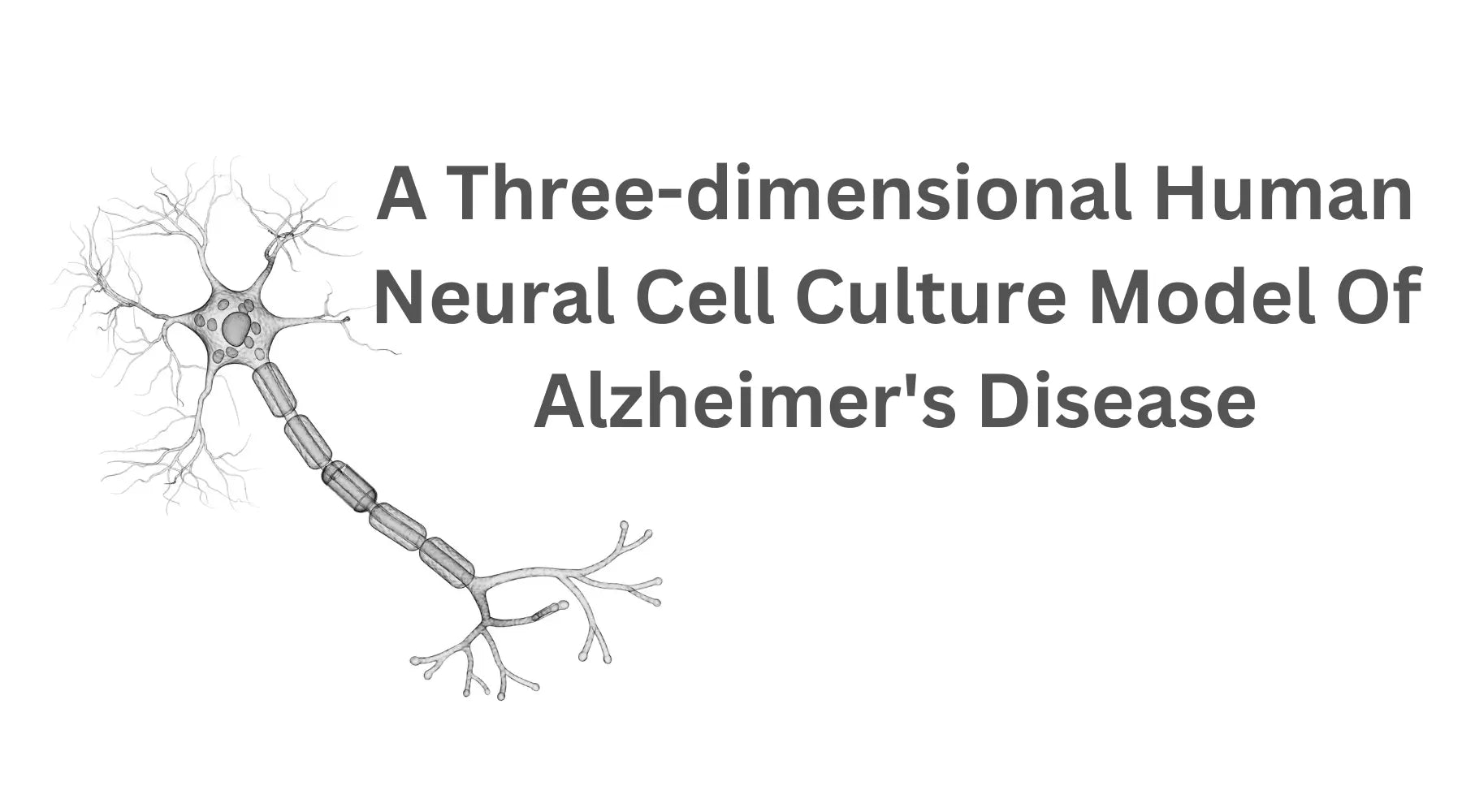 Millions of people worldwide are afflicted by the tragic and complex condition known as Alzheimer's disease. It is essential for the development of efficient therapeutics to comprehend the complex mechanisms behind this neurodegenerative illness. In this blog post, we'll examine a cutting-edge strategy: a three-dimensional (3D) human neural cell culture model of Alzheimer's disease. We'll also look into the possibilities of the natural chemical Shilajit for treating Alzheimer's.
Millions of people worldwide are afflicted by the tragic and complex condition known as Alzheimer's disease. It is essential for the development of efficient therapeutics to comprehend the complex mechanisms behind this neurodegenerative illness. In this blog post, we'll examine a cutting-edge strategy: a three-dimensional (3D) human neural cell culture model of Alzheimer's disease. We'll also look into the possibilities of the natural chemical Shilajit for treating Alzheimer's.
3D neural cell culture models' Importance
Two-dimensional (2D) cell cultures have traditionally been used in Alzheimer's disease research; while they provide valuable insights, they fall short of accurately representing the intricacy of brain tissue. On the other hand, 3D cell culture models offer a more precise illustration of the 3D structure of the human brain. These models are made by growing human neural cells in a 3D environment that frequently resembles the brain's extracellular matrix.
3D neural cell culture models have advantages for Alzheimer's research.
Better Disease Modeling:
Because 3D models more accurately represent the cellular environment, they enable scientists to track the development of diseases more precisely.
Drug Testing:
These models offer a platform for evaluating possible Alzheimer's treatments and medications, perhaps hastening the development of new medicines.
Pathogenesis:
By studying the mechanisms underlying Alzheimer's disease, such as the buildup of amyloid plaques and tau tangles, researchers can better understand how the disease develops.
Potential of Shilajit in Alzheimer's Treatment
In the Himalayan region, a natural chemical called shilajit is known for its possible health advantages. While research into Shilajit's potential in the treatment of Alzheimer's is underway, it has several qualities that might be important:
Shilajit is a high source of antioxidants, which can help lessen oxidative stress in the brain, a defining feature of Alzheimer's disease.
Anti-Inflammatory Effects:
Alzheimer's disease is linked to chronic inflammation in the brain. The anti-inflammatory qualities of shilajit might be advantageous.
Cognitive Support:
According to some research, Shilajit may improve memory and cognitive function, potentially providing respite to Alzheimer's patients.
Conclusion
A significant advancement in our understanding of this complex ailment is creating a 3D human brain cell culture model of Alzheimer's disease. These models help scientists better understand the illness, which could result in drug development and treatment advancements.
While Shilajit's potential for treating Alzheimer's is exciting, it's essential to understand that it shouldn't be taken as a stand-alone treatment or a cure for the disease. Given the complexity of the condition, effective therapy for Alzheimer's frequently entails a combination of medicines, drugs, and lifestyle modifications.
In conclusion, there is optimism for a better future in Alzheimer's research and therapy thanks to the convergence of cutting-edge research methods like 3D neural cell culture models and the investigation of natural chemicals like Shilajit. By sponsoring these initiatives, we may aid in the search for practical treatments for those afflicted by this challenging disease.